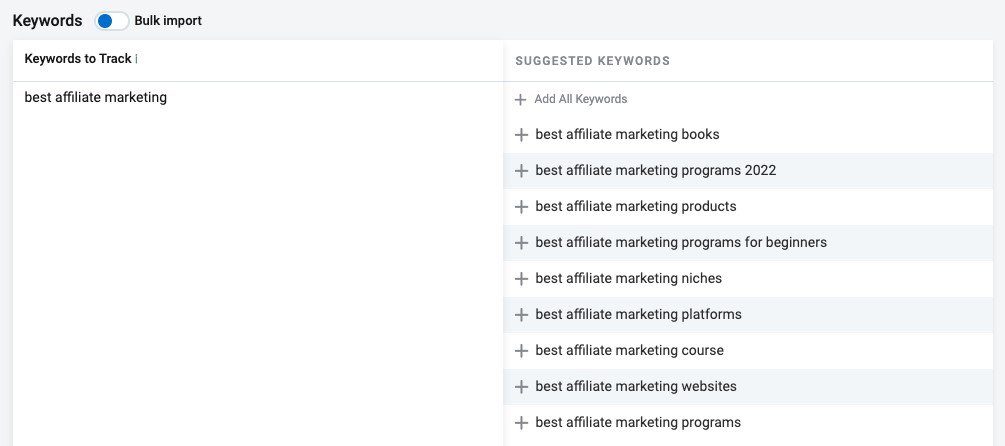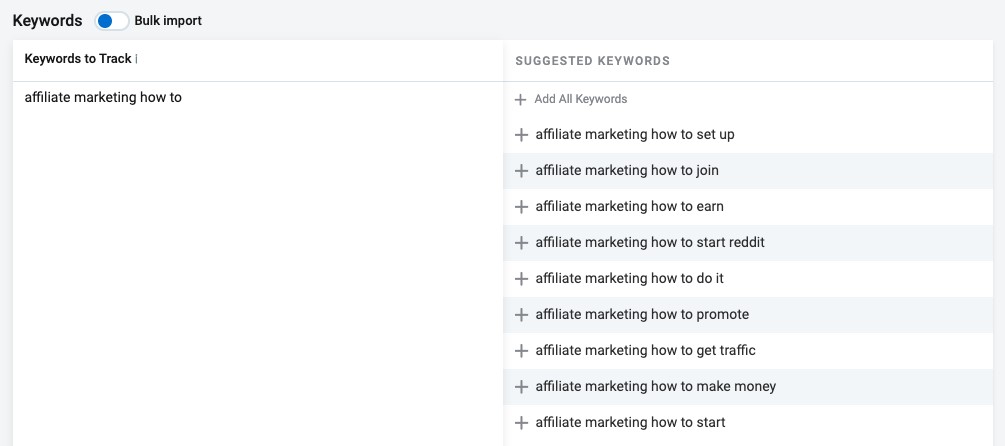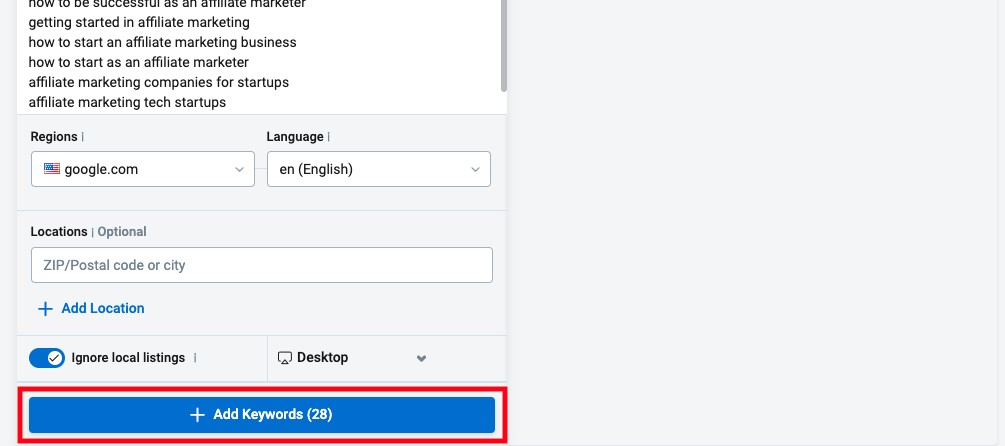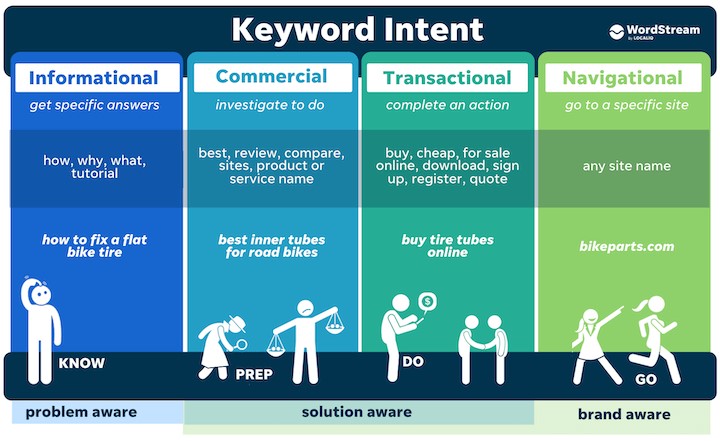Keyword research is the foundation of an SEO strategy. Finding low-competition keywords with high monthly search volume allows you to generate tons of organic traffic to your site.
Finding these types of keywords is, however, easier said than done.
More often than not, your competitors are ahead of you, as they’re already ranking for these terms. It will take more than well-written content to outrank them from the top spot.
In this case, consider finding new keyword opportunities. And since most content creators nowadays can conveniently find keywords using a keyword research tool, you need to think outside the box and find a different way to unearth niche-related keywords that are easily ranked.
Enter Keyword Golden Ratio (KGR).
In this blog, we’ll discuss what KGR is, how to calculate it, how to find a good selection of KGR keywords, its pros and cons, and more. After reading this article, you should have all the information you need to start implementing the KGR method in your keyword research strategy.
What Is KGR or Keyword Golden Ratio?
Keyword Golden Ratio is the term coined by Doug Cunnington of Niche Site Project. It describes the process of finding target keywords that haven’t been covered in-depth by many websites.
These usually come in the form of long-tail keywords that your competitors may have potentially overlooked, or are not interested in because of the low search volume (around a couple of hundred searches or less in a month).
You may wonder why KGR focuses on relatively low search volume keywords, but this is actually what makes the KGR method a success. The goal of the KGR technique is to find as many KGR keywords as possible and use them to create an army of high-quality content.
If done right, optimizing KGR keywords allows you to rank at the top of Google results in a shorter period than trying to compete in high-volume search keywords. Furthermore, if your site is already well-established in the industry, you may even get your KGR-specific target pages ranked days after they’ve been published.
How to Calculate Keyword Golden Ratio
To use KGR, you must spend time researching the potential keywords and calculating the ratio.
For the calculation itself, you’ll need two pieces of data: the number of “allintitle” keyword results and their search volume.
How to get these numbers? Let’s start with the “allintitle” results first.
Allintitle is an advanced Google search operator used to help find pages that contain the exact search phrase in their title.
So, for example, if your long-tail keyword is “keyword research for affiliate marketing,” here’s how you can search for the “allintitle” results in the Google search bar:
allintitle:keyword research for affiliate marketing

The search like above shows that 457 pages have “keyword research for affiliate marketing” in their page titles.
Next, you need to find the search volume of the keyword. For this, you can use Keyword.com.
On your Dashboard, click the “+ Add Keywords” button on the top right corner and add “keyword research for affiliate marketing” to the list.
After a few moments, the result is fetched. The search volume of the keyword is 40.

It’s important to note that for the KGR method to work to the fullest, you must search keywords with a maximum of 250 monthly searches. This is because it’s easier to rank for low search volume keywords than those with thousands of monthly searches.
The 250 search volume cap may seem too low, but it’s a good rule to follow, especially if you launch a brand-new site. Optimizing your site for multiple KGR keywords can rank your website high on Google SERPs. Then, once you’ve developed enough traffic from your content, you can start going after KGR keywords with higher monthly search volumes.
All right, since you have all the numbers that you need to calculate the KGR score, let’s calculate it by using this equation:

From our example, the KGR score is: 457/40 = 11.425
What does the score mean?
The KGR score represents the likelihood of the keyword ranking high on SERPs. Therefore, the lower the score, the higher the chances that your content will be ranked fast for the chosen keyword.
When the KGR score is:
- Less than 0.25: high chance to be ranked high
- Between 0.25 and 1.00: moderate chance to be ranked high
- Higher than 1.00: poor chance to be ranked high
The aim is to get a KGR score equal to or below 0.25. You can use keywords with a KGR score between 0.251 and 1.0, but you should prioritize keywords with lower KGR scores.
Since our example has an 11.425 KGR score, which is much higher than the ideal 0.25, it’s not recommended to create content with “keyword research for affiliate marketing” as the main keyword.
How to Find a Broad Variety of KGR Keywords
Up until this point, we’ve covered the data needed and the method to calculate KGR scores. However, as you can see from our previous example, finding keywords that have a maximum of 0.25 KGR score can be challenging. So, how do we find a good selection of potential KGR keywords?
The key is to think creatively, be patient with lots of testing, and use Keyword.com’s Keyword Suggestion feature to help you develop many keyword combinations. Here’s how it works.
1. Go to your Keyword.com Dashboard and click “+ Add Keywords”.
2. We’ll continue using “affiliate marketing” as our focused keyword again, so type in “affiliate marketing” in the “Keywords to Track” section.
3. You’ll then get a few suggestions related to “affiliate marketing”. You can choose which suggestions you want to add or add all suggestions by clicking the “+ Add All Keywords” at the top of the suggestions list.

4. Tweak the keyword by adding a few words before and/or after the “affiliate marketing”. For instance:
Best affiliate marketing + books / programs 2022 / products

Or affiliate marketing how to + start / promote / earn money.

5. Once you’re happy with the list, click “+ Add Keywords” at the bottom of the page, and Keyword.com will generate the data for you.
If you want more localized keyword data (e.g., your target audience is the French-speaking Canadians living in Montreal, Canada), you can change the language and location settings to better fit your need.

Remember that after you gather the potential long-tail keywords, you need to choose those that don’t exceed 250 search volume, collect their search volume using the “allintitle” Google search operator function, and then calculate the KGR score.
Finding keywords that meet the 0.25 max KGR score criteria is, therefore, a trial-and-error process that could take a while.
But the good news is that once you have all the numbers, you can speed up the calculation process using a spreadsheet or google sheet for your SEO. You can create your own to mimic the KGR score formula or download Doug Cunnington’s spreadsheet here and automate the process.
3 KGR Success Stories
Doug Cunnington first introduced the concept of KGR back in 2015. He implemented it on his Amazon affiliate site and increased his commissions from $450 a month to a whopping $20,000 a month in 12 months.
Part of Cunnington’s success was its growing organic traffic. It increased from 4,000 to almost 35,000 a month from December 2015 to December 2016.
This massive growth, however, didn’t come from implementing the KGR method only. Besides creating 200 posts a month using the KGR keywords, Cunnington also actively did link-building by writing guest blogs.
Nevertheless, this still shows that combining your SEO strategy with the best on-page and off-page tactics will fast-track your way to success.
Fascinated with what Cunnington achieved, others followed and tested the tactics themselves.
Evan S. Porter built a website from scratch in 2018 and used the KGR approach as his core strategy. After a year, his affiliate site earned $3,802 a month from affiliate commissions, ads, and selling high-ticket items. His site also reached almost 20,000 visitors by that time.
Another success story comes from Jaron in 2018. Jaron was a beginner who knew nothing about SEO and online marketing before starting his site. After four months, his site started making $100/month, and a few months later, he earned $100 a day!
Pros and Cons of KGR
Although implementing the KGR method in your keyword research and content creation strategy can bring significant growth to your site, it’s not a one-size-fits-all tactic that you can apply today and expect immediate positive results.
Aside from the success stories above, KGR has some disadvantages that could affect your business. Thus, before you use KGR, you should know its pros and cons to help you decide whether this tactic is right for you.
Pros
KGR is designed to help site owners generate organic traffic quickly. Targeting low-competition keywords on Google allows you to fill the content gaps on the SERPs and increase your search visibility.
- Perfect for newbie site owners
Building a successful website that attracts substantial organic traffic takes a lot of work. For example, besides creating high-quality content, you also need to take care of the on-page/off-page SEO and technical SEO. This can easily overwhelm beginners.
The beauty of implementing KGR is that instead of tackling all the SEO and web development tasks at once, new website owners can focus on creating great content with KGR as its core. Then, once traffic and revenue are coming in, they can go for more competitive terms and branch out to the other facets of web development.
Cons
- It demands lots of content creation
Since KGR keywords have a low search volume, you must write and publish as many KGR-optimized articles as possible to gain website authority. This requires a lot of planning, writing time, and huge expenses if you hire freelance writers.
- Not ideal for content with too obscure topics
Since one of the elements in calculating KGR is search volume, the success of the KGR method also depends on how many people are searching for particular keywords.
If the search volume is too low, the interest in this keyword is too poor, and there’s no point in creating content using this keyword. So you aim for moderately searched keywords (250 search volumes per month) but still rarely written or available on the internet.
Tips for Ranking KGR Keywords
Building a niche website that generates lots of organic traffic takes time and demands proper strategies to see positive results in your campaigns.
So, when targeting KGR keywords on your website, you should do the following.
1. Dedicate Lots of Pieces Optimized for KGR Keywords
Some people say that KGR doesn’t work. They wrote a few pieces optimized for KGR keywords but didn’t rank.
Implementing the KGR method means you can’t just create a few articles and expect life-changing results. You must plan a content strategy for all the KGR keywords you found, write the articles, and publish them consistently over three months or longer.
Once your site gets in the rhythm of publishing content, Google will acknowledge the fresh and unique content coming out from your site. The KGR content will also help build your topic relevance, which is a big plus for ranking in Google.
2. Determine Keyword Intent
When optimizing for KGR keywords, make sure to consider the search intent of the keyword. You must understand why users are searching for this query so that you can provide them with content that answers their questions.
For example, find out whether the search queries are related to informational, commercial, transactional, or navigational questions.
For informational questions, you can write how-to articles. Commercial questions are usually answered in listicles, reviews, or pros and cons blogs. As for the transactional and navigational queries, you can direct them to other websites after you give some information about the product/service the readers are looking for.

3. Build Backlinks to Your Pages
Ultimately, KGR is just a piece of the SEO puzzle. It can help increase the organic traffic to your website, but KGR alone may not be enough to help you succeed unless other efforts complement it.
Going back to Cunnington’s case study, he grew his website’s traffic and earnings through content and backlinks. And as simple as it sounds, these are some of the essential things needed to get your site ranked on search engines for your targeted keywords.
Many consider building backlinks the most challenging aspect of SEO, but it can significantly affect your site. This is especially true if you want to succeed in a competitive niche, as content alone likely won’t cut it. To improve your rankings on SERPs, you will also need to build high-quality backlinks.
Conclusion
If you’re looking to generate organic traffic to your website in a relatively shorter period than doing the conventional SEO technique, Keyword Golden Ratio can help you achieve it.
However, one drawback of the KGR method is the demanding preparation time. Before you can calculate the KGR scores, you need to find the potential KGR keywords, their search volume, and their “allintitle” results.
To help you reduce the preparation time significantly, use Keyword.com. You’ll get plenty of keyword suggestions (plus their variations) and their search volume—no need to switch between tools and manually combine the data. Have a look at our keyword rank tracker and SEO reporting tool.
Keep in mind that KGR isn’t a magic method that instantly makes your site rank on top of search results. You need to research, write, publish high-quality content constantly, and complement it with other SEO methods to see its effectiveness.
Start your KGR SEO strategy with Keyword.com. Sign up to get a 7-day FREE trial!